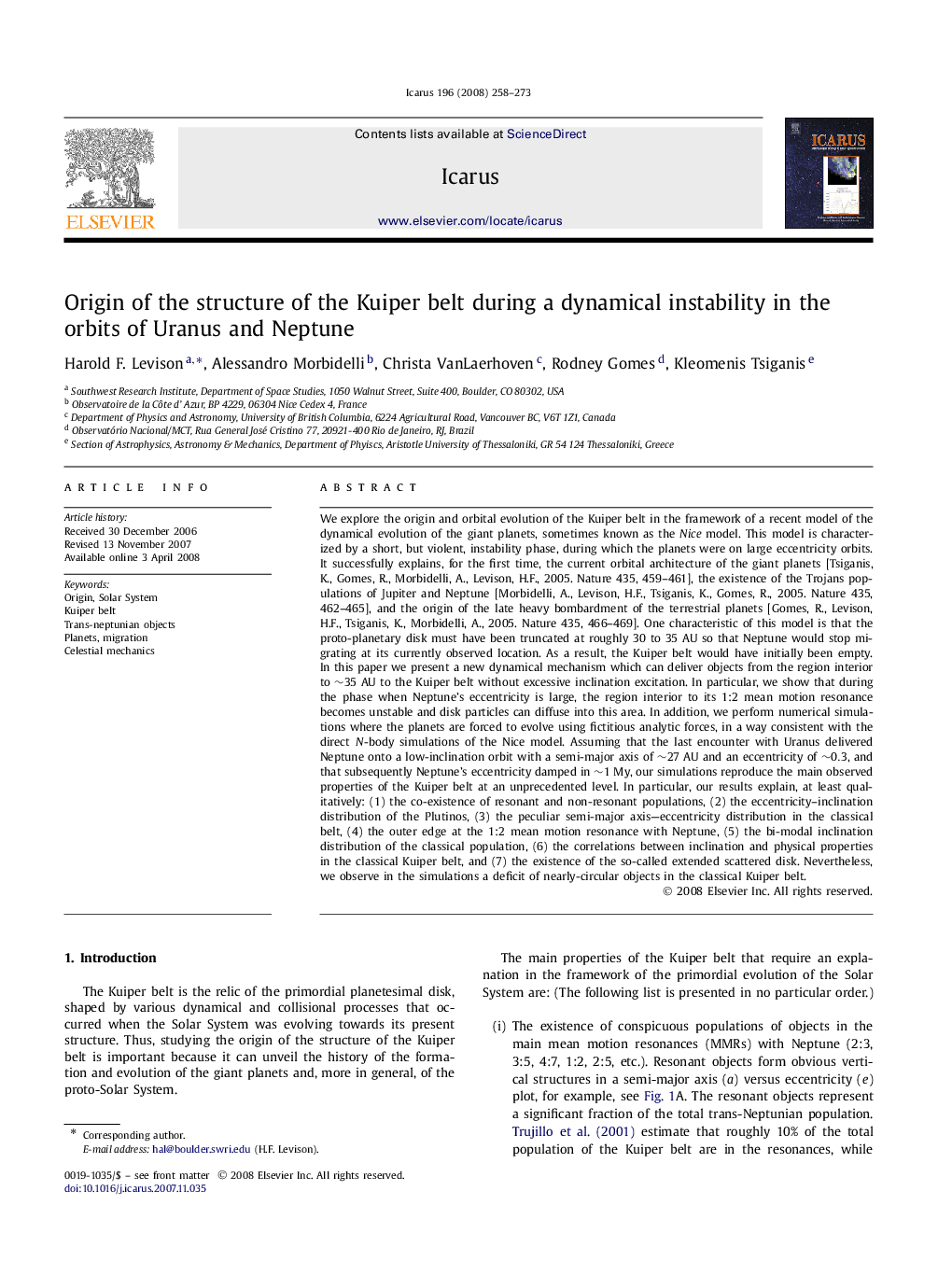| کد مقاله | کد نشریه | سال انتشار | مقاله انگلیسی | نسخه تمام متن |
|---|---|---|---|---|
| 1775145 | 1021185 | 2008 | 16 صفحه PDF | دانلود رایگان |

We explore the origin and orbital evolution of the Kuiper belt in the framework of a recent model of the dynamical evolution of the giant planets, sometimes known as the Nice model. This model is characterized by a short, but violent, instability phase, during which the planets were on large eccentricity orbits. It successfully explains, for the first time, the current orbital architecture of the giant planets [Tsiganis, K., Gomes, R., Morbidelli, A., Levison, H.F., 2005. Nature 435, 459–461], the existence of the Trojans populations of Jupiter and Neptune [Morbidelli, A., Levison, H.F., Tsiganis, K., Gomes, R., 2005. Nature 435, 462–465], and the origin of the late heavy bombardment of the terrestrial planets [Gomes, R., Levison, H.F., Tsiganis, K., Morbidelli, A., 2005. Nature 435, 466–469]. One characteristic of this model is that the proto-planetary disk must have been truncated at roughly 30 to 35 AU35 AU so that Neptune would stop migrating at its currently observed location. As a result, the Kuiper belt would have initially been empty. In this paper we present a new dynamical mechanism which can deliver objects from the region interior to ∼35 AU∼35 AU to the Kuiper belt without excessive inclination excitation. In particular, we show that during the phase when Neptune's eccentricity is large, the region interior to its 1:2 mean motion resonance becomes unstable and disk particles can diffuse into this area. In addition, we perform numerical simulations where the planets are forced to evolve using fictitious analytic forces, in a way consistent with the direct N -body simulations of the Nice model. Assuming that the last encounter with Uranus delivered Neptune onto a low-inclination orbit with a semi-major axis of ∼27 AU∼27 AU and an eccentricity of ∼0.3, and that subsequently Neptune's eccentricity damped in ∼1 My, our simulations reproduce the main observed properties of the Kuiper belt at an unprecedented level. In particular, our results explain, at least qualitatively: (1) the co-existence of resonant and non-resonant populations, (2) the eccentricity–inclination distribution of the Plutinos, (3) the peculiar semi-major axis—eccentricity distribution in the classical belt, (4) the outer edge at the 1:2 mean motion resonance with Neptune, (5) the bi-modal inclination distribution of the classical population, (6) the correlations between inclination and physical properties in the classical Kuiper belt, and (7) the existence of the so-called extended scattered disk. Nevertheless, we observe in the simulations a deficit of nearly-circular objects in the classical Kuiper belt.
Journal: Icarus - Volume 196, Issue 1, July 2008, Pages 258–273